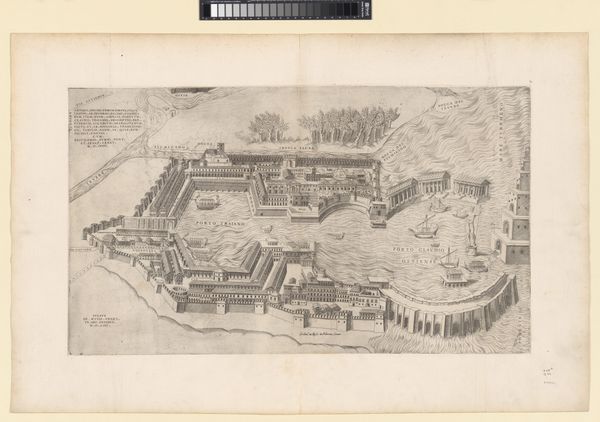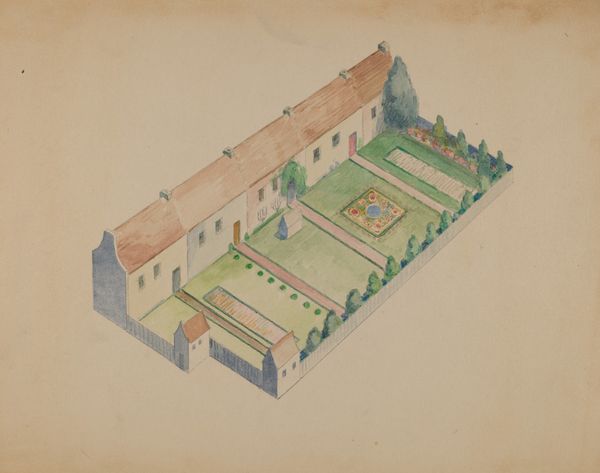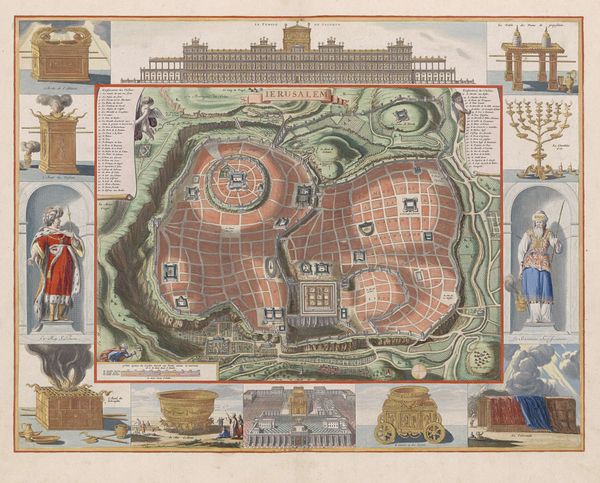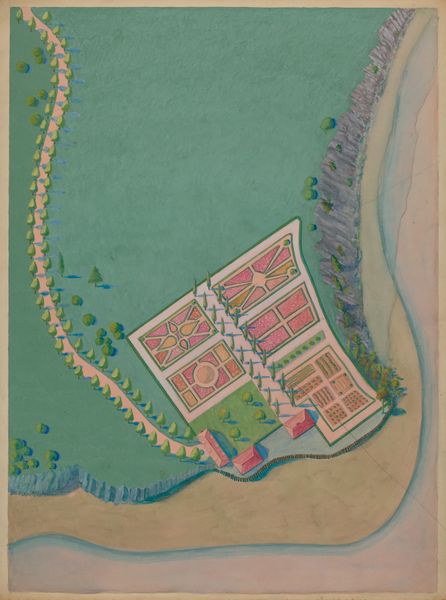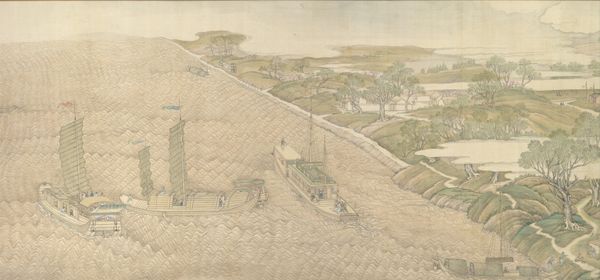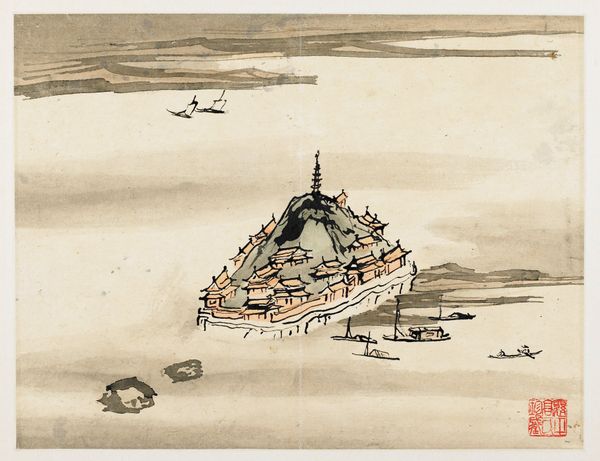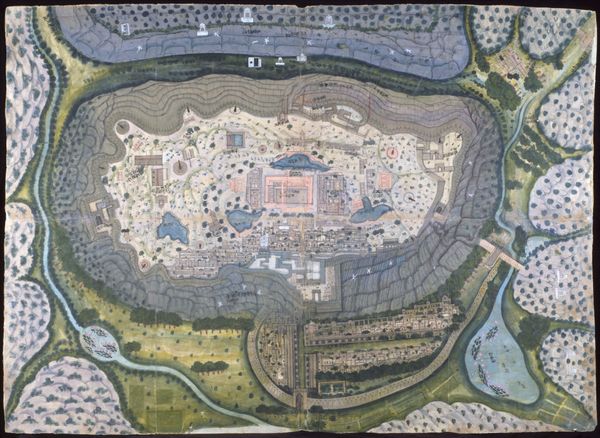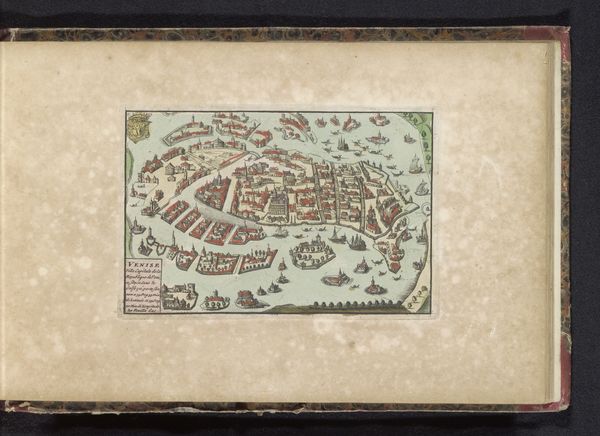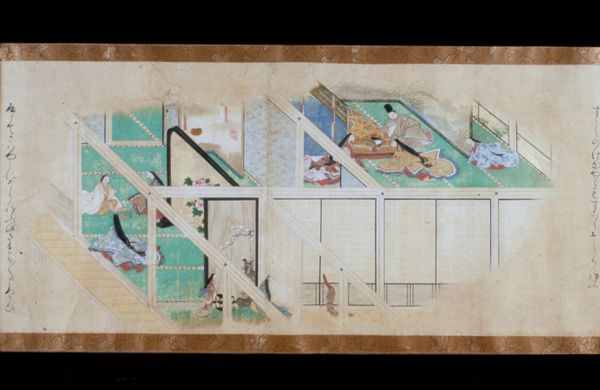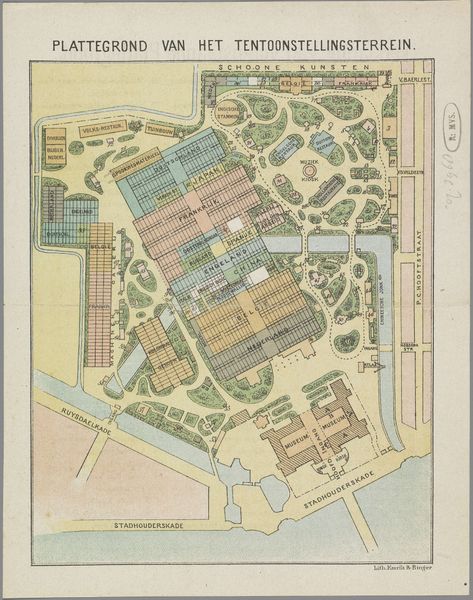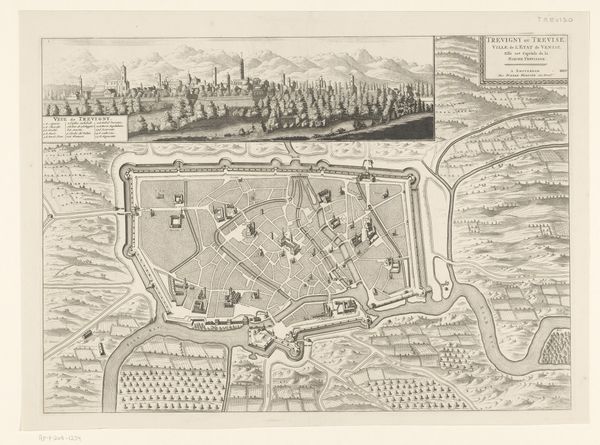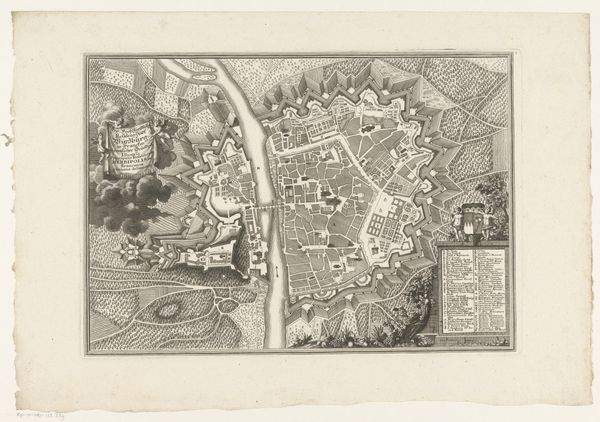
painting
#
painting
#
asian-art
#
landscape
#
ukiyo-e
#
cityscape
#
genre-painting
#
miniature
Dimensions: height 600 mm, width 850 mm
Copyright: Rijks Museum: Open Domain
Editor: So, this is "View of Deshima" painted between 1833 and 1836 by Kawahara Keiga. It's so detailed; I’m struck by the miniature quality and the somewhat unreal sense of order it gives. It almost feels like a model rather than a place where people lived. What catches your eye about it? Curator: It is like a model, isn't it? As if we are given privileged access, from above, to this carefully orchestrated world. It’s almost voyeuristic. But, it's more than just a picture; it's a carefully constructed narrative. Notice the Dutch flag; a clue to the unique status of Deshima. Think about Japan's isolationist policy at the time, and how Deshima was the only place where trade with Europeans was permitted. It's not just a cityscape; it's a keyhole view into a very specific and regulated exchange between cultures. Don’t you wonder about all the lives, dreams, and negotiations contained in this tiny island? Editor: That's fascinating. I hadn’t really considered the political implications; I was mostly looking at it aesthetically. The idea that something so carefully rendered could represent a whole complex relationship is something that shifts how I see it now. Curator: Exactly! And see how everything seems neat, contained? I always think, in a way, Keiga is subtly reminding us of control, of the strict boundaries placed upon that cultural exchange. Even beauty, even landscape, can speak of power. Did that influence how you now see the aesthetic you described before? Editor: Definitely. It’s not just pretty; it's pretty with a purpose! I guess I was missing that before. It's amazing how much historical context changes the viewing experience. Curator: And that is the wonderful journey art takes us on: revealing the many layers of history, culture and self that a single image can hold!
Comments
No comments
Be the first to comment and join the conversation on the ultimate creative platform.
